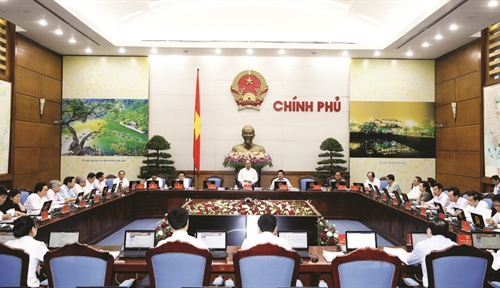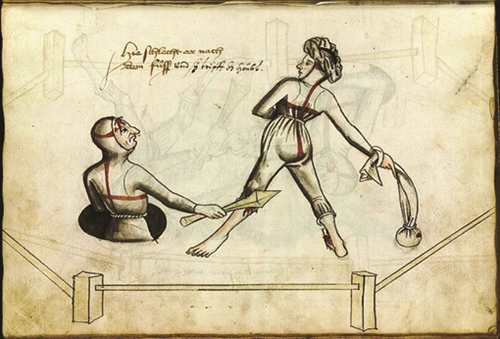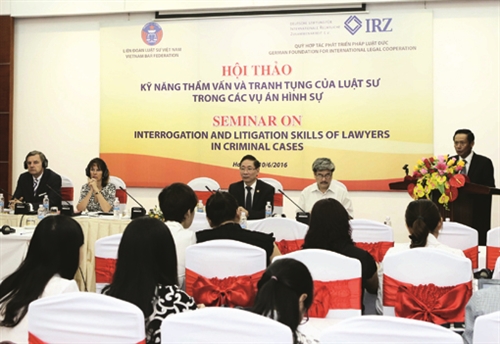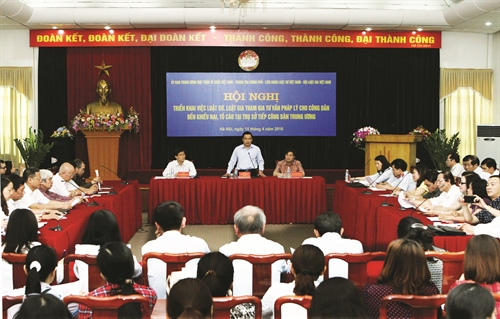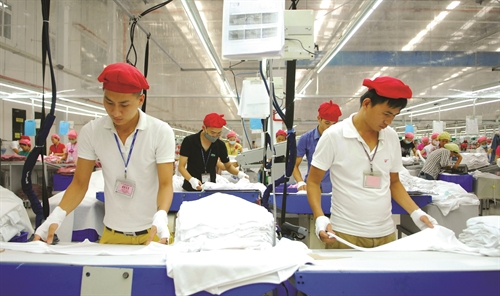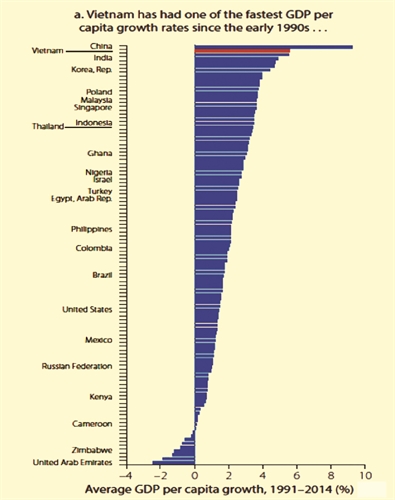 |
Yen Vu
Executive at Rouse Legal Vietnam*
Overview
Over recent years, the handling of company and domain names infringing upon others’ intellectual property (“IP”) rights, including trademarks, trade names and geographical indications, has remained troublesome for both right holders and enforcement authorities due to the high number of actors in the relevant procedures.
In particular, the historic lack of cooperation and conflicting bureaucratic rules between the Ministry of Science and Technology (“MoST”) and the provincial Departments of Planning and Investment (“DPI”) under the Ministry of Planning and Investment (“MPI”), as well as between MoST and the Vietnam Internet Network Information Center (“VNNIC”) under the Ministry of Information and Communications (“MoIC”) respectively, has created significant obstacles for Vietnamese IP enforcement. For example, when the Inspectorate of MoST requests an infringer to change its company name, eliminate infringing elements from the company name or return the domain name, such a decision can easily face challenges or inaction from DPI or VNNIC as a result of the uncertain procedures involved and the vague interpretation of the relevant laws.
In addition, DPIs and VNNIC tend to base their decisions only on the Enterprise and Information Technology legislation relevant to their own fields, despite the existence of relevant regulations in other pieces of legislation. However, the new joint circulars have made a great attempt in addressing these issues.
New joint circular on handling of infringing company names
Joint Circular No. 05/2016/TTLT-BKHCN-BKHDT detailing and guiding the handling of company names infringing industrial property rights was issued by MoST and MPI on April 5, 2016, and came into effect from May 20, 2016. This Joint Circular has tried to resolve a currently confusing situation with the following three major points:
l The vague term “concluding document by competent authorities on use of company name infringes upon industrial property right” has been clarified. Accordingly, such concluding documents should be either (i) inspected/examined by competent authorities handling industrial property infringement on the use of company names or (ii) a decision on sanctioning an administrative violation in which the remedial measure of changing the infringing company name or eliminating the infringing elements is applied. In the latter case, the infringing company may choose to change their name or their business lines.
l Detailed procedures with a clear timeframe for handling company name infringements has been established. There are two kinds of procedures to change the company name: eliminating the infringing elements of the company name, and withdrawing the Business Registration Certificate (“BRC”) if applicable. This corresponds with the two examples described above.
l Clearer guidance about the responsibilities that the relevant parties and agencies should use to the address the infringement. This means the Business Registration Office (“BRO”), under the DPI where the infringing company resides, will deal with the request from the right holder or competent authorities handling the infringement. Moreover, the BRO is required to appoint their staff to join the inspectorate team when there is a co-operation request to manage the infringing company names.
It is worth noting that the strictest sanction, being the withdrawal of a BRC, would be based on the failure to send a report as requested by the BRO (according to Articles 209.1c and 211.1d of the Law on Enterprises). However, it remains to be seen in practice how the BRO should then deal with the matter once the infringing company sends their report/explanation regarding the infringement.
Although the regulations on the withdrawal of a BRC are not detailed enough at this stage, the joint circular is still a major breakthrough and we cannot expect any more from such a document. This being said, the joint circular outlines better interpretations of the law and clearer procedures than anything seen previously, representing a significant step forward in strengthening enforcement works in Vietnam. Nonetheless, we look forward to changes to the Law on Enterprises in order to gain some further clarity on the matter.
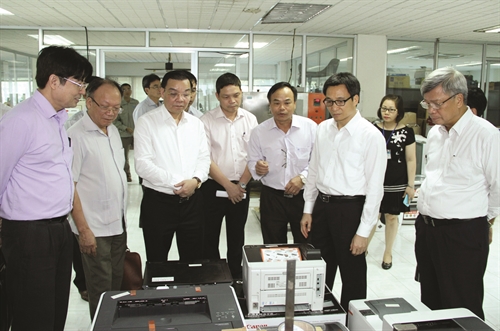 |
| Deputy PM Vu Duc Dam visits Quality Assurance and Testing Center 1 of the Directorate for Standards, Metrology and Quality __Photo: Anh Tuan/VNA |
New joint circular on handling of infringing domain names
On June 8, 2016, MoST and MoIC issued Joint Circular No. 14/2016/TTLT-BKHCN-BTTTT providing guidelines on the procedures for changing, returning and withdrawing domain names infringing on the IP rights of others. This joint circular came into effect on July 25, 2016 and has tried to address the following issues:
l The need for clarification on the conditions for applying each of the following administrative measures to address infringing domain names: (i) changing the website content of the infringing domain names, (ii) returning the infringing domain names to the VNNIC; and (iii) withdrawing the infringing domain names;
l Providing detailed procedures for the implementation of each measure within a specific timeframe and the necessary actions to carry out the measures; and
l Setting out clear responsibilities of the VNNIC, IP enforcement authorities and domain name registrars to ensure co-operation and an effective process to deal with infringing domain names.
The joint circular aims to address (i) domain names identical to or similar to an IP subject matter, i.e. a trademark, a trade name or a geographical indication and any infringing content from the associated website which is found to infringe upon IP law; and (ii) domain names used for publishing infringing content.
However, this is inconsistent with MoST’s previous Circular [11/2015/TT-BKHCN] issued on June 26, 2015 (“Circular 11”), which condemned the act of cybersquatting by registering domain names similar or identical to a trade mark, trade name or geographical indication regardless of whether the domain names in question were in use. For example, if the registration of a domain name is merely for the purpose of reselling it or to prevent the right holder from securing such a domain name, this was covered under Circular 11. The joint circular however is silent in cases where the associated website of the domain name is inactive or contains a personal blog or other contents or if it actively links to other websites that are not related to the business activities of the IP right holder, which is usually used by the cyber squatter as a cover to avoid any legal action against them.
Despite this, it is in line with the MoIC and the VNNIC’s mindset that domain name disputes should only be resolved via the courts and arbitration proceedings as outlined by the Law on Information Technology. It seems that the two Ministries still need to take further action to reach a mutual approach to regulate cybersquatting issues. Furthermore, Vietnam will need to revise the Law on Intellectual Property and the Law on Information Technology to avoid conflicts between these two legal instruments. For the time being, IP rights holders will have no choice but to initiate a lawsuit before the Court to take action against cybersquatting, which does not seem very effective. A mechanism similar to the UDRP is still out for discussion among lawmakers.
Although the joint circular failed to comprehensively cover the issue of cybersquatting (and it remains to be seen how the circular will play out in reality), it has at least made some progress in resolving the conflict between the two Ministries in dealing with infringing domain names. By doing so, it has significantly contributed to the effective enforcement of IP rights in Vietnam.
Conclusion
The Vietnamese government has set itself a high bar in their effort to pursue IP infringements as part of its effort to fully integrate itself with the global economy. It has recognized that the strong protection of innovation and investment from foreign investors and local entrepreneurs is vital to Vietnam’s economic development, and this ought to be applauded. Despite this however, very significant problems remain and new challenges are emerging. The fight against infringements is a long journey and requires significant legal developments to address the issues the economy faces; the two mentioned circulars are great examples of such effort from the Vietnamese government. It is therefore reasonable for IP rights holders to foresee a comprehensive legal framework, effective enforcement system and transparent business environment within Vietnam in the near future.-
Good IPR management in Vietnam requires physical proximity to the appropriate authorities, together with international standards of client service. In accordance with this principle, we have offices in both Ho Chi Minh City and Hanoi, and are able to provide our services across the Indo-Chinese peninsula (Cambodia and Laos).
Our Vietnam team comprises of 50 people from a variety of specialist disciplines, with Chris Vale managing the operation from Hong Kong and Yen Vu our executive in Hanoi.
We provide a full range of IP services - from devising and implementing global evidence gathering, dispute resolution and protection strategies to providing commercial IP, patent and trade mark agency services.
